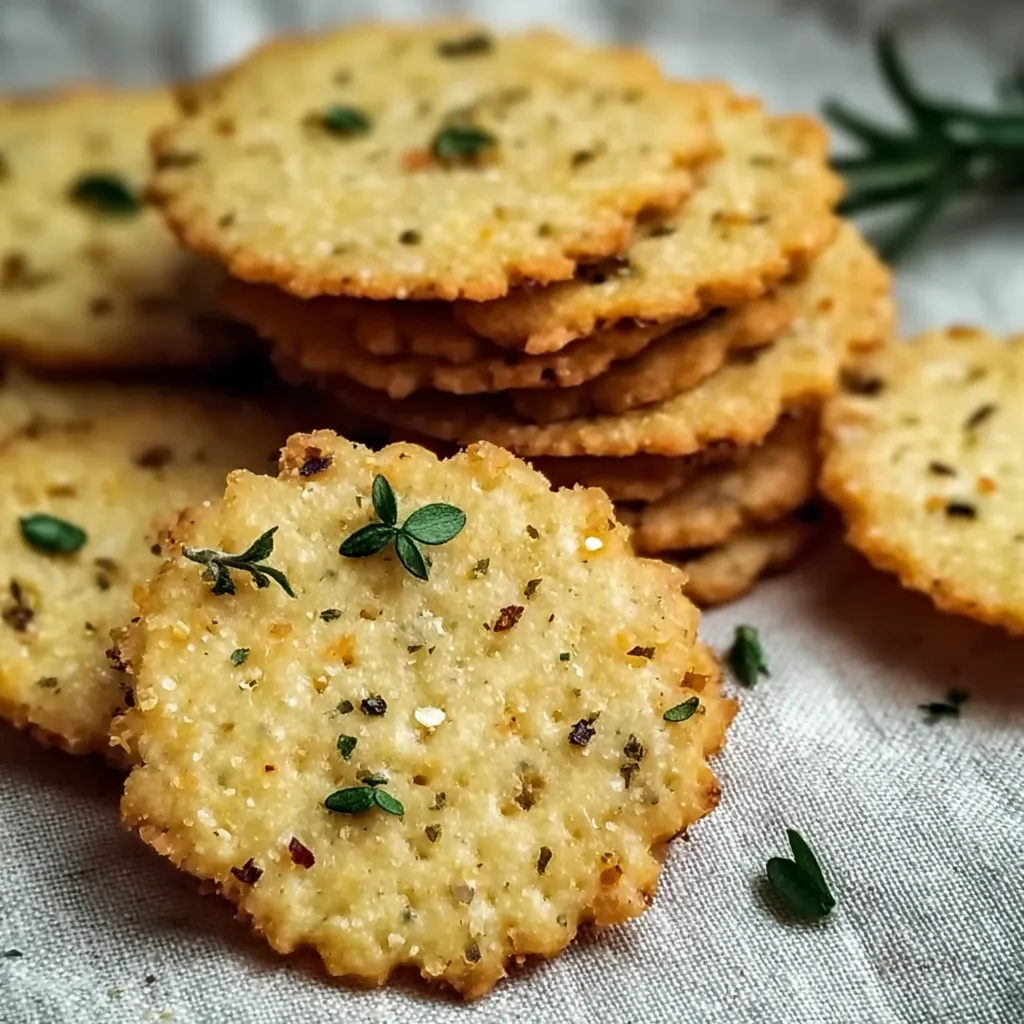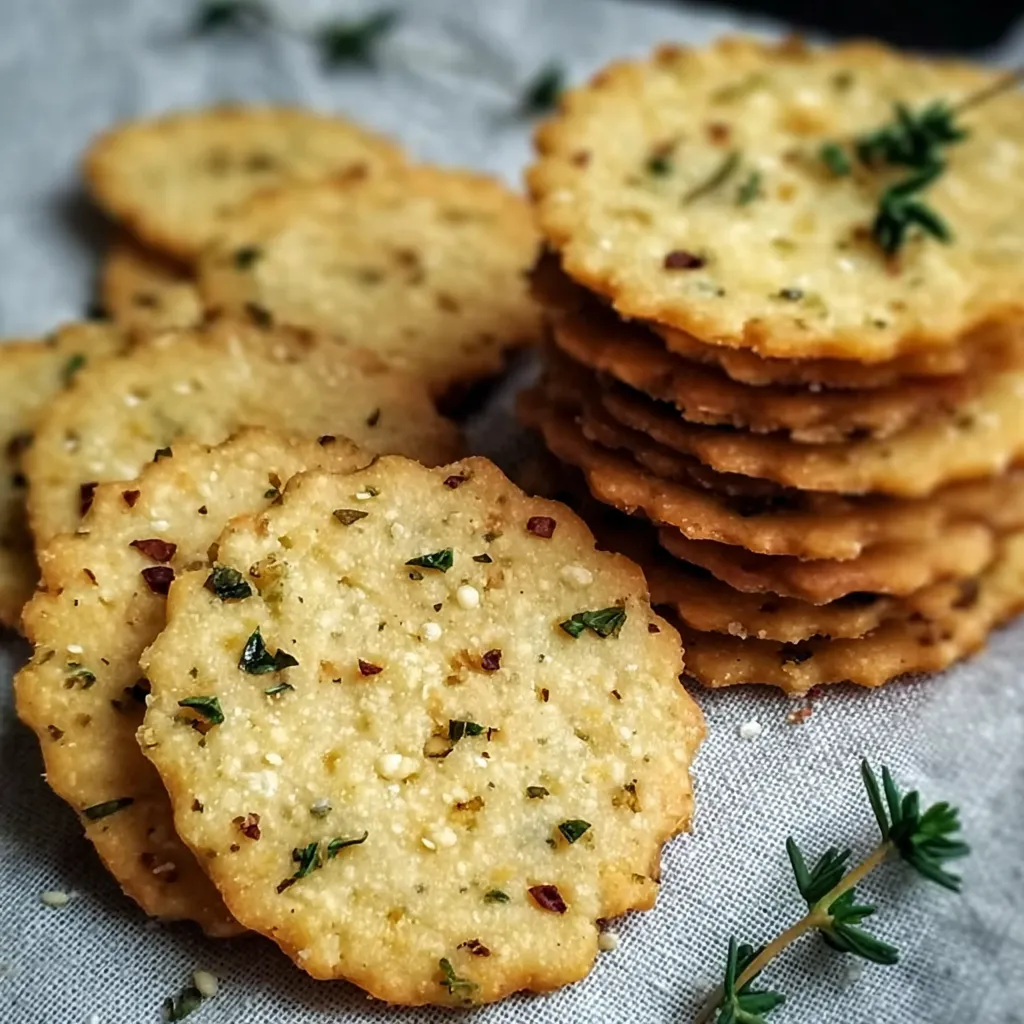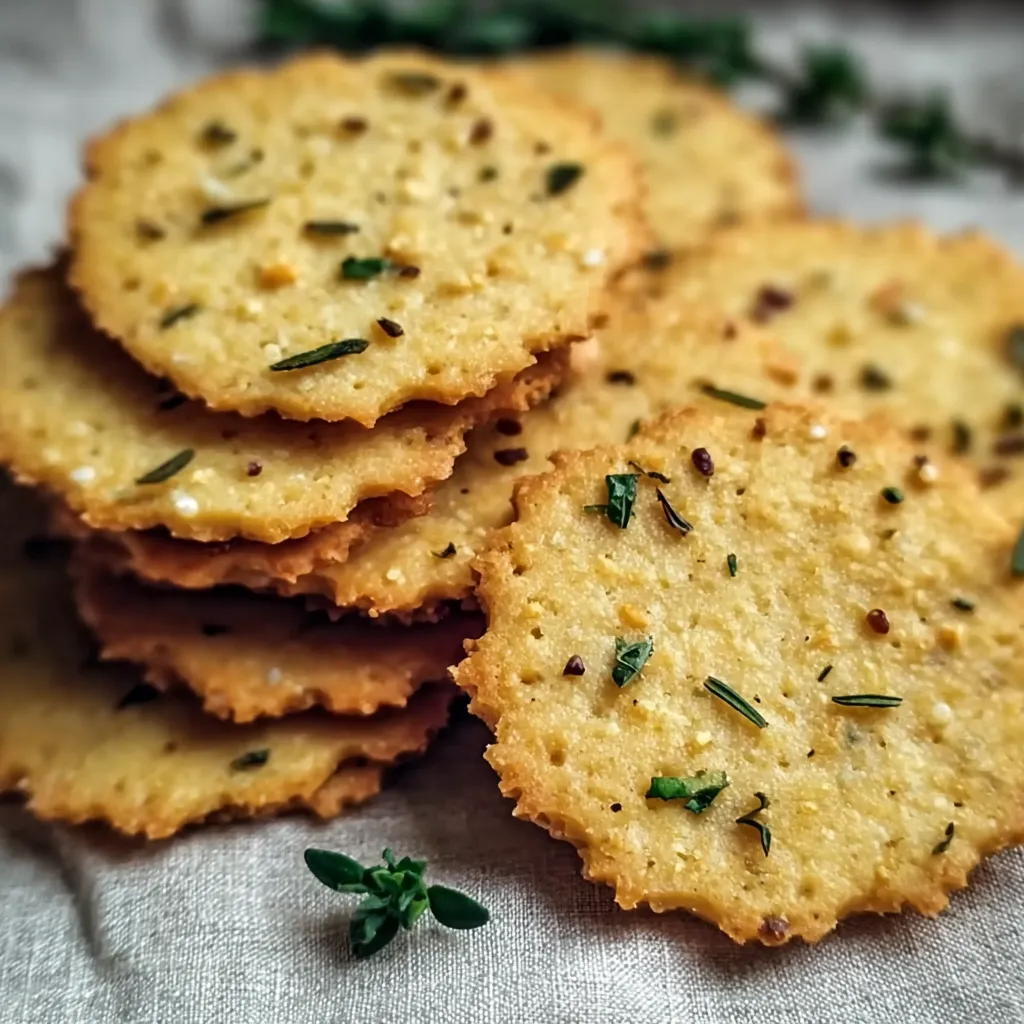 Save
Save
This protein-packed chickpea flour cracker recipe transformed my snack game completely. I discovered these delightful bites when searching for gluten-free alternatives that didn't sacrifice flavor or texture. The combination of aromatic herbs and garlic creates a Mediterranean-inspired treat that's both nutritious and satisfying.
I first made these crackers during a weekend experiment with alternative flours and was amazed by how similar they were to traditional wheat crackers but with a richer, nuttier flavor profile. My skeptical family now requests them regularly for our movie nights.
Ingredients
- Chickpea flour provides a protein rich base with a subtle nutty flavor that creates the perfect canvas for herbs and spices
- Water helps bind the dough without adding any extra fat
- Olive oil lends moisture and that distinctive Mediterranean flavor while helping achieve the perfect crispness
- Dried mixed herbs like rosemary thyme and oregano infuse the crackers with aromatic flavor
- Garlic powder adds savory depth without the work of fresh garlic
- Salt enhances all the flavors and provides that classic cracker taste
- Black pepper brings a subtle heat that complements the herbs beautifully
- Optional toppings like sesame seeds and flaky sea salt add texture and visual appeal
Step-by-Step Instructions
- Preheat Oven
- Set your oven to 350°F with the rack in the middle position. Line a baking sheet with parchment paper extending slightly beyond the edges for easy removal later. The middle rack ensures even heat distribution critical for uniform baking.
- Mix Dry Ingredients
- In a medium bowl whisk together chickpea flour dried herbs garlic powder salt and pepper until thoroughly combined. Take time to break up any lumps in the chickpea flour by whisking vigorously or sifting if necessary. This step ensures a smooth dough without flour pockets.
- Combine Wet and Dry
- Create a well in the center of your dry ingredients and pour in olive oil and half the water. Stir with a wooden spoon gradually adding remaining water until you have a cohesive dough with no dry spots. The texture should be similar to play dough firm but pliable.
- Adjust Consistency
- Check your dough texture carefully. If too dry add water just a teaspoon at a time. If too wet sprinkle in additional chickpea flour gradually. The perfect consistency feels slightly tacky but doesn't stick to your fingers excessively.
- Knead Briefly
- Turn dough onto a chickpea flour dusted surface and knead gently for about 30 seconds until smooth. Avoid overworking the dough which can make the crackers tough. You want just enough manipulation to create a uniform texture.
- Roll the Dough
- Place dough between two sheets of parchment paper to prevent sticking and roll to approximately ⅛ inch thickness. Maintain even thickness throughout for consistent baking. Too thick and crackers will be chewy rather than crisp.
- Score and Prepare
- Remove top parchment sheet carefully and score dough into your preferred shapes using a pizza cutter or sharp knife. Apply optional toppings by brushing lightly with water or oil then sprinkling with seeds herbs or salt pressing gently to adhere.
- Bake to Golden Perfection
- Transfer the parchment with scored dough to your baking sheet and bake for 15 to 20 minutes checking at the 12 minute mark. Look for golden brown edges and a firm touch. Chickpea flour browns faster than wheat flour so watch closely.
- Cooling for Crispness
- Remove from oven and let crackers cool completely on the baking sheet. This critical step allows them to continue crisping. For extra crunch turn off the oven crack the door and leave crackers inside for another 10 to 15 minutes.
- Break and Store
- Once fully cooled break crackers along score lines and store in an airtight container at room temperature for up to one week. The clean break along score lines indicates perfectly baked crackers.
 Save
Save
My favorite component is the aromatic herb blend which reminds me of summers spent in southern Italy. I particularly love rosemary for its piney resinous quality that pairs beautifully with the earthiness of the chickpea flour. These crackers have become such a staple in my home that I now keep premixed batches of the dry ingredients ready for quick preparation.
Flavor Variations
The basic recipe serves as an excellent canvas for countless flavor variations. For a spicier version add a pinch of cayenne or smoked paprika. Lemon pepper seasoning creates a bright zesty profile perfect for summer entertaining. For a more savory umami rich cracker incorporate nutritional yeast into the dough approximately 2 tablespoons will impart a wonderful cheesy flavor while keeping the crackers vegan friendly. Mediterranean lovers might enjoy adding sun dried tomato powder or dried basil for an Italian inspired twist.
Serving Suggestions
These crackers truly shine when paired with the right accompaniments. They hold up beautifully to hummus especially varieties with roasted red pepper or olive tapenade enhancing their Mediterranean character. For elegant entertaining arrange them on a board with soft cheeses like cashew cheese for vegans or goat cheese for vegetarians alongside fresh fruit and olives. They also make an excellent base for mini open faced appetizers topped with avocado slices roasted vegetables or vegan pesto. For a simple snack enjoy them on their own their robust flavor profile requires no enhancement.
Storage Solutions
While these crackers stay fresh in an airtight container at room temperature for about a week proper storage techniques can extend their life and maintain optimal texture. If you live in a particularly humid climate consider adding a small silica gel packet to the storage container to absorb excess moisture. For longer storage freeze the rolled uncooked dough between parchment sheets for up to three months simply thaw in the refrigerator overnight before baking. To revive slightly softened crackers place them on a baking sheet in a 300°F oven for 3 to 5 minutes allow to cool completely before returning to storage.
 Save
Save
Recipe FAQs
- → Can I substitute other flours for the chickpea flour?
While chickpea flour gives these crackers their distinctive flavor and protein content, you can experiment with other gluten-free flours like almond flour or buckwheat. However, you'll need to adjust the liquid ratio as different flours absorb moisture differently. For the closest texture, stick with bean-based flours like chickpea.
- → How do I know when the crackers are done baking?
The crackers are done when they develop a golden-brown color around the edges and feel firm to the touch, typically after 15-20 minutes of baking. Remember that chickpea flour browns more quickly than wheat flour due to its higher protein content, so start checking at the 12-minute mark. They'll continue to crisp up during cooling.
- → What herbs work best in these crackers?
Mediterranean herbs like rosemary, thyme, and oregano complement the nutty flavor of chickpea flour beautifully. You can use dried herb mixes or create your own blend. Fresh herbs can also work but reduce the quantity and chop them very finely to distribute the flavor evenly throughout the dough.
- → Why did my crackers turn out chewy instead of crispy?
Chewy crackers usually result from dough that's rolled too thick or underbaking. Aim for approximately ⅛ inch (3mm) thickness when rolling the dough. If they're still chewy after the initial baking time, you can return them to a low oven (300°F/150°C) for 5-10 additional minutes, or try the trick of leaving them in the turned-off oven with the door cracked open.
- → What can I serve with these chickpea crackers?
These versatile crackers pair wonderfully with hummus, baba ganoush, or other Mediterranean dips. They also complement cheese plates, can be served alongside soups, or enjoyed on their own as a satisfying snack. Their sturdy texture makes them excellent vehicles for toppings like olive tapenade or roasted red pepper spread.
- → How can I add different flavors to these crackers?
You can easily customize these crackers by adjusting the herb and spice blend. Try adding nutritional yeast for a cheesy flavor, smoked paprika for a smoky note, za'atar for a Middle Eastern twist, or Italian seasoning for a Mediterranean profile. Experiment with different toppings like poppy seeds, everything bagel seasoning, or cracked black pepper.
